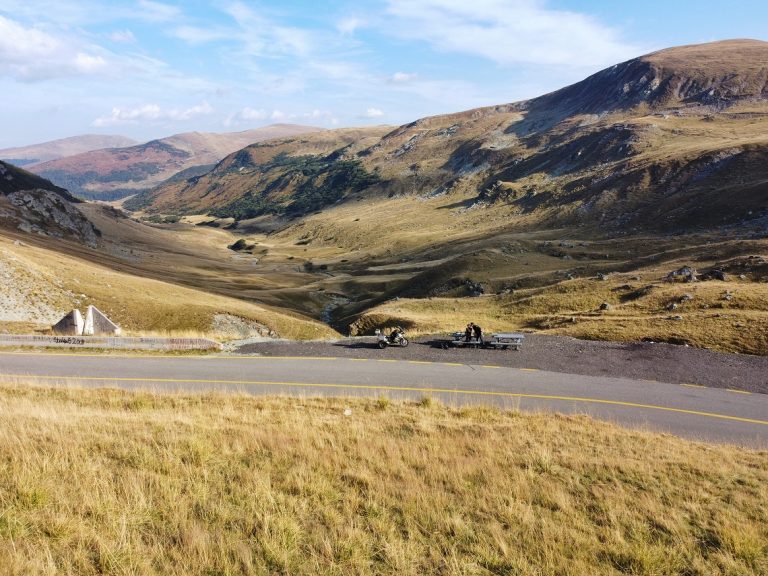Sean Denton and his wife Emily embark on a journey of discovery through Eastern Europe
My wife Emily and I have been on a quest to visit all the countries in Europe over the past four years. After completing most of western Europe, we started to plan a tour to the east. The lure of the unknown became ever intriguing.
After many evenings of research, a rough route of our tour emerged. We decided not to restrict ourselves to a rigid schedule but to take a spontaneous approach with no hotels booked and no concrete plans. Our only goal was to get to Transnistria and back, a ‘country’ that isn’t officially recognised by the international community. We had 21 days to do it. Seems easy enough, right?
Starting in Zurich, Switzerland, we had ridden more than 600 miles through Europe by the time we arrived at the Slovakian border. However, for me the real adventure began here. Switzerland, Germany and Austria all felt like home as we’ve spent so much time there over the past four years.
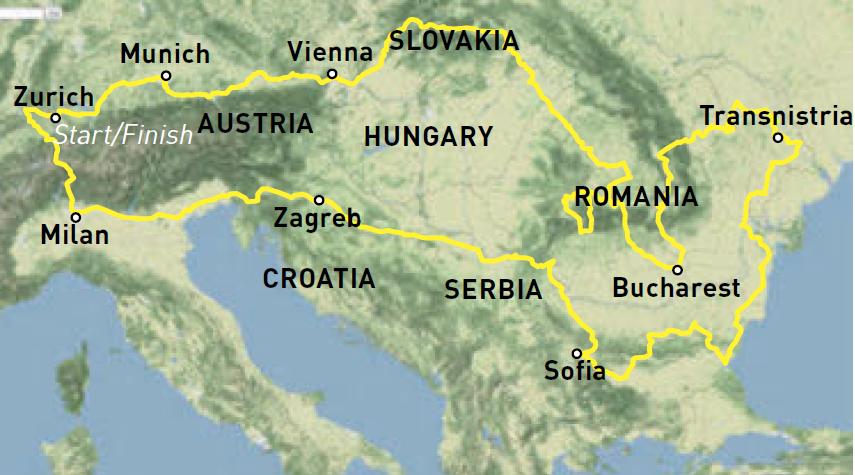
But Slovakia was a juxtaposition of old and new. In the distance, I could see the Tatras Mountains and it was in this moment that I realised how far we still had to go. We may have been on tour for some time now, but we had so much more to discover.
We spent the next couple of days riding around the low and high Tatras Mountains, exploring the medieval city of Kosice and beyond. We took smaller roads as we rode through countless small villages, immersing ourselves in as much local culture as we could. We soon fell in love with Slovakia’s untouched lands and epic roads, as we rode majestic peaks, valleys, and forests.
We were sad to leave it behind as we crossed into Hungary, where the road conditions worsened as soon as we left the border behind. As the sunset behind us and the temperature dropped, we entered the Bukki National Park and rode onto the majestic Lake Tisza, Hungary’s largest manmade lake in search of a hotel for the night.
A different world
Arriving at the Romanian border the next morning, our surroundings completely changed. After having the roads to ourselves in Hungary, we were met with noisy trucks barreling down the road, wandering pedestrians, and stray dogs barking at our heels. Up to this point in the tour we had made great progress, but after the first 30 miles in Romania on poorly maintained roads, I knew the pace was going to be slower. We travelled deeper into the country while waving at every passing horse and cart and revving to the delight of the school children we saw by the side of the road before stopping for the night.
The next morning we woke excited because we would be riding the famous Transalpina mountain pass. I was curious to see if it would live up to the rave reviews I’d read about in magazines and seen online.
We spent most of the day travelling towards the Transalpina until I eventually watched the road name on the GPS change to DN67C. I shifted into a lower gear as we leaned into the first curve of the 90-mile pass. It didn’t take long to realise it was a phenomenal road. Sweeping bend after sweeping bend came towards us and it felt like it would never end. Emily held on tight in the pillion seat behind me, both of us in awe of the mountainous landscape.
As evening approached, we pulled over to cook dinner on the pass, sipping camp stove coffee as the sun disappeared into the Carpathian Mountains.
Life doesn’t get much better. As we packed up our stove and pressed on along the Transfagarasan, we revelled in one of the high points of our journey. As we entered hairpin heaven we fell into a rhythm of uninterrupted curves. The next few hours were pure joy.
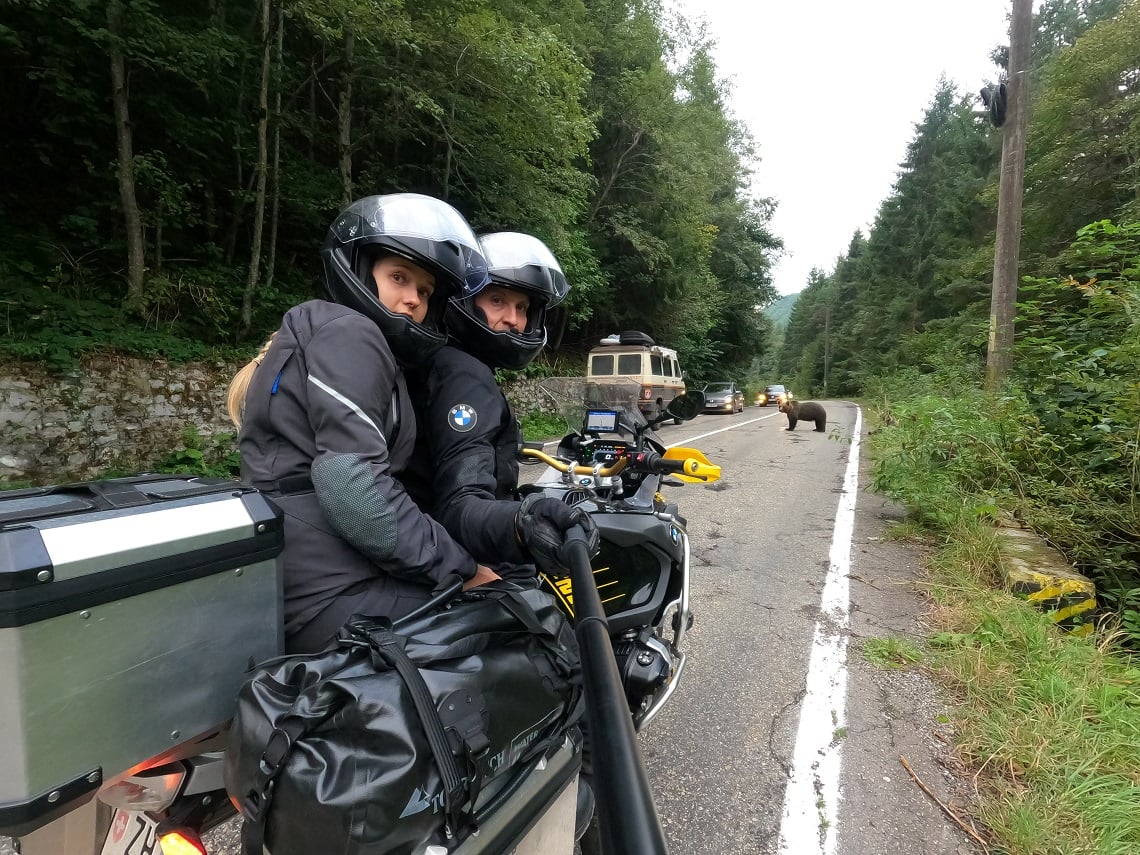
Bear sightings
As we continued deeper into the mountains, we received warnings via text message that there were high levels of bear activity. We didn’t know it then, but this would be one of the most memorable evenings of our life.
“Em, look, a bear!” I shouted over the intercoms as I slammed on the brakes. A family of three bears were stood 20m in front of the bike. I turned the engine off and watched them cross the road. Neither of us could believe our eyes. I cautiously started the bike up again and went around these incredible creatures. With each bend in the road, a new bear emerged. We encountered nine of them and watched from a distance as they went about their daily routine.
A combination of the road, the landscape, and the wildlife cemented the Transfagarasan forever in our hearts. It is a very special place indeed and I can’t recommend riding it yourself highly enough. The end of the pass was bittersweet. It had exceeded all my expectations and to have ridden this road with my girl on the pillion seat made it even better. Our next stops were the cities of Bucharest, Brasov, and Lasi, before we made our way to the border with Moldova.
The sense of accomplishment came over us as we passed through the border control area and put our feet down on Moldovan ground for the first time. It was a mixture of freshly laid tarmac and gravel tracks as we entered the rural countryside. The bike handled it all with ease.
We stopped for the night at a small family-run hotel, communicating only with a translator app and plenty of hand gestures. We cooked dinner with the family as they told us about their lives, dreams and hopes for their nation which declared its independence from the old Soviet Union in 1991.
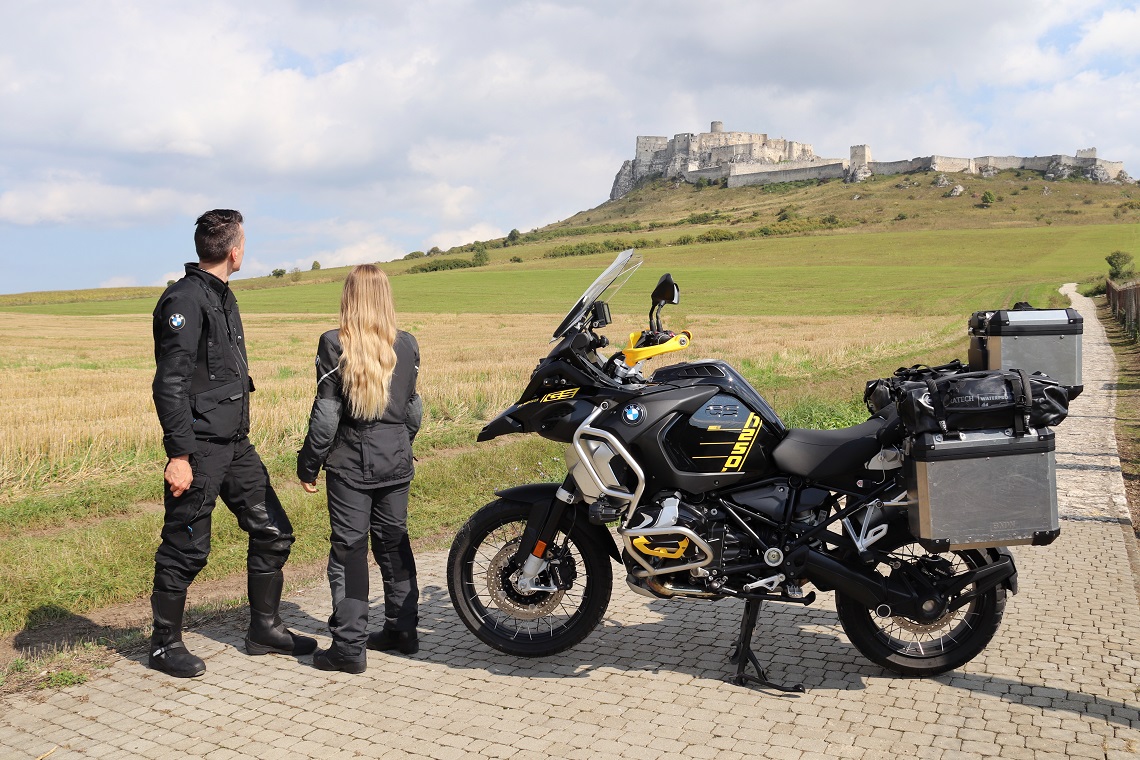
Entering Transnistria
Whenever the day starts with army checkpoints through no man’s land, you know it’s going to be a memorable one. Emily had our passports and paperwork as we ride through a buffer zone in the direction of Transnistria. It is a small breakaway region made up of a narrow strip of land along the border with Ukraine. It broke away from Moldova in 1992 after a short war but it isn’t recognised by the Moldovan government or the international community as a whole.
Two guards approached the motorbike with machine guns slung across their shoulders, circling us slowly, and an uncomfortable feeling of tension was all around us. They pointed us in the direction of a small track. I had a mix of nerves and apprehension as we approached checkpoint number three. Military trucks and guards stood next to the road.
“Document!” a large man demanded as he motioned for us to pull into a waiting area. He took the documents off us and walked into a building. Passports, motorbike papers, insurance, he had taken everything. I started to think we might get turned around here and sent back as the checks were taking longer than usual.
The guards questioned us further but with limited English, they didn’t seem to get the answers they were looking for. Thankfully, our papers were in order. After agreeing on a fixed departure time, and paying a small road tax, we were allowed on our way but under strict rules that we had to be out of Transnistria in just 12 hours.
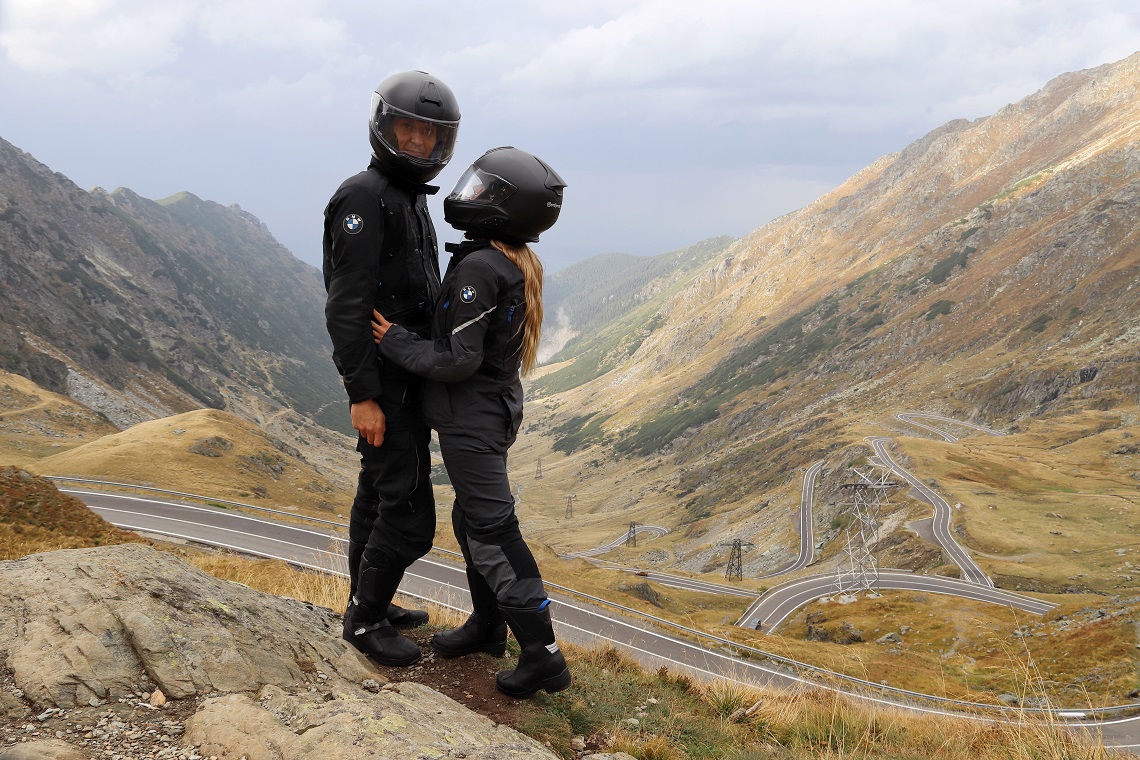
You promised to show me the world
Crossing the border was like stepping back in time. In fact, it felt like we had been transported back to the USSR. Statues, Soviet architecture, and Russian relics were everywhere. The country that doesn’t exist definitely did. We stopped at a small coffee shop and ordered two black coffees that cost us 12 Rubles, which is about 70p. Everywhere we went, people’s eyes were on us. It was obvious they don’t get to many tourists visiting.
“You promised to show me the world, but I never thought I’d end up here,” Emily said, as we sat by the Dniester River and reflected on a land that has been fought over for so many years. During our short time in Transnistria, we found it wonderfully peculiar, and as we headed back through the checkpoints into Moldova, we went with a newfound respect and understanding of this small corner of the world.
And just like that, we were on our way to the coast. We took a lesser-known route from the country’s capital Chisinau, travelling south using mostly back roads with a speed limit of 80kph (50mph) where we dared.
After 12 hours and some 500 miles, we arrived in Bulgaria exhausted and found a place to stay. The next morning, we set the GPS in the direction of the ancient city of Nessebar and rode off in search of new horizons. Road signs and shop names had become impossible to understand and the tarmac under our wheels was broken, but I couldn’t have been happier.
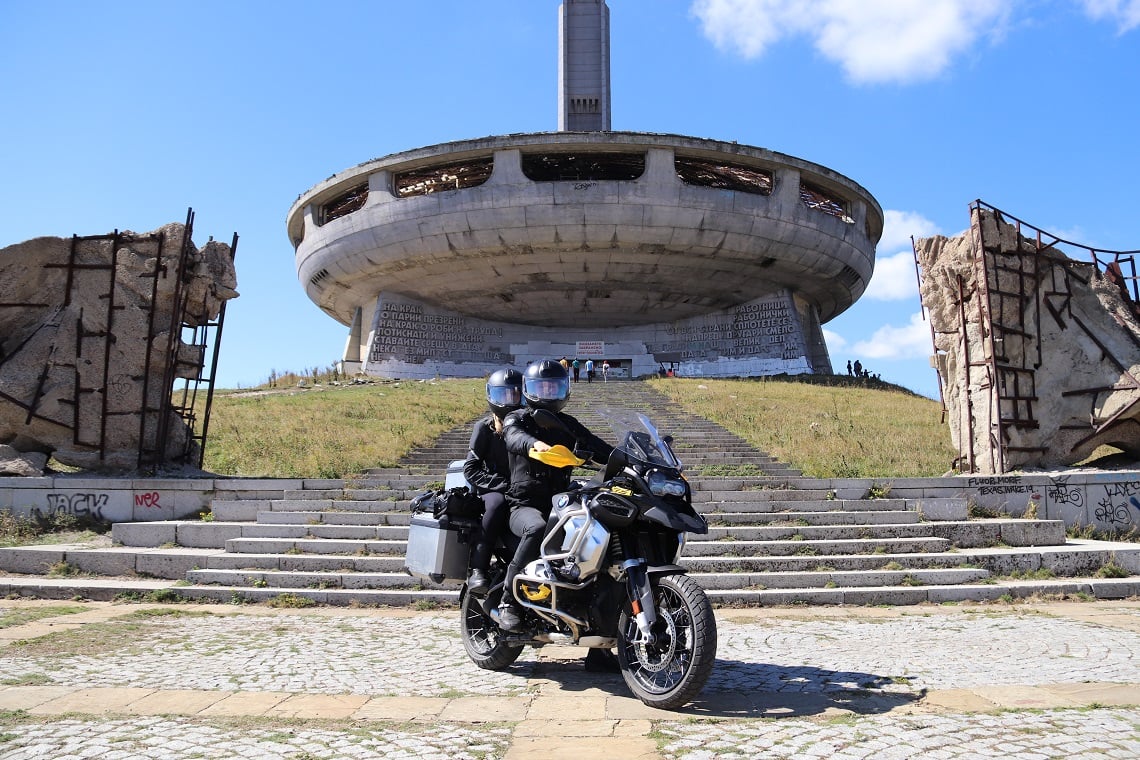
Look, It’s a UFO
For this trip, our bike of choice was the BMW R 1250 GS Adventure.
–
Throughout the tour, we put it through its paces and it delivered every time. Even riding two-up, fully loaded there was always plenty of torque at the throttle, fantastic stopping power, and the active suspension adapted quickly to the ever-changing road conditions.
With comfort levels to match, the GSA made for an exhilarating ride.
–
All our clothes and equipment for two people packed securely into the aluminium panniers with two small waterproof Touratech bags strapped on top for any additional items such as food, water and waterproofs.
We were in full adventure mode as we entered central Bulgaria. Heading to the Shipka Pass, which summits at 1,150m in the Balkan Mountains, the road conditions were better than we expected.
Fractured tarmac and ruts, yes, but nothing the GS Adventure couldn’t handle. At this point, I was surprised by how easily we had reached such a remote part of Europe.
“Oh shit!” I shouted as the bike bottomed out. The road had disappeared into a pothole which would be better described as a crater.
Thankfully, the bike’s suspension coped well and we continued on along an ever-worsening road. After what felt like a lifetime, we turned a corner and we were met with the sight of a huge concrete structure that looked like a UFO flying saucer on top of the mountain.
That structure was the Buzludzha Monument which was unveiled in 1981 to celebrate Bulgaria’s communist progression. The valley the memorial overlooks was the site of a number of significant battles in the country’s history, and the alien-looking structure was used by Bulgaria’s communist government for official events until the Buzludzha Monument was closed in 1989. These days it’s covered in graffiti and run down but it’s still an impressive sight.
The next few days were a blur of gravel and curves as we rode through Bulgaria’s mountainous heart. The roads were quiet, sounds of birds and nearby waterfalls filled the air, and of course, the sound of our BMW boxer engine added to the ambience. We eventually arrived in Sofia, Bulgaria’s capital city, parked the motorbike up, showered off the dust, and headed into the city.
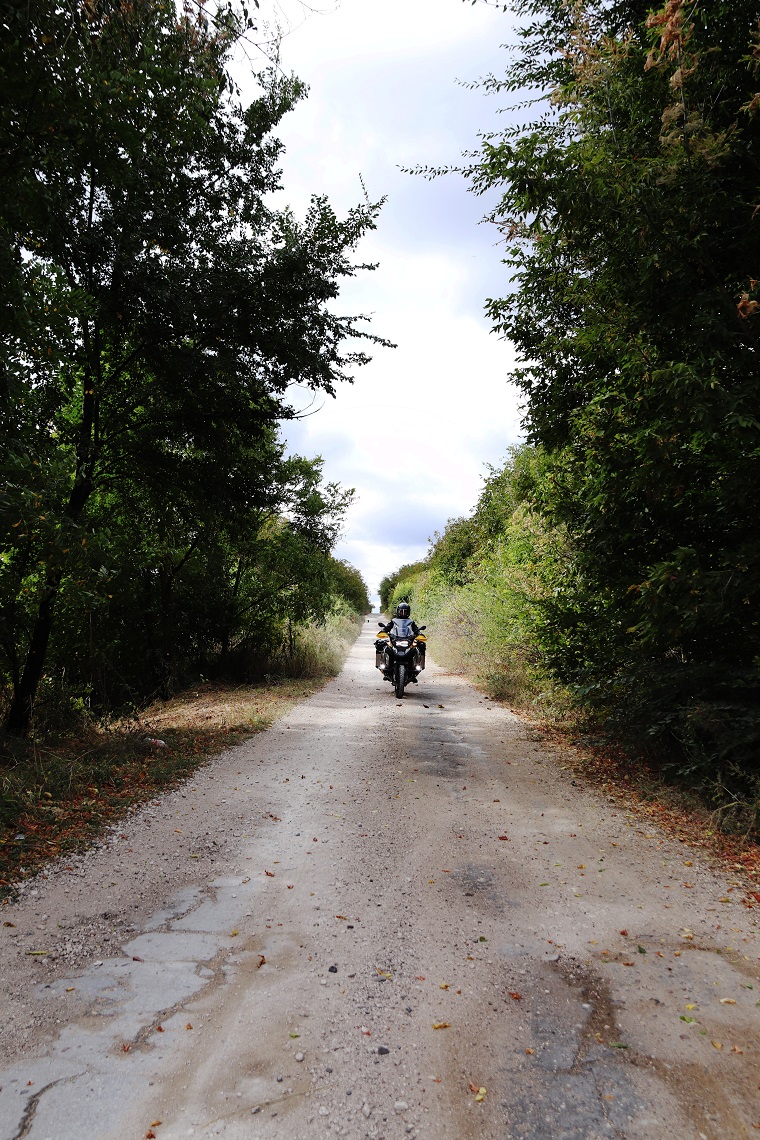
On the rocks
We both have British passports and didn’t require any special visas during the trip. In Moldova, we were required to purchase additional insurance as this was not covered on our green card which cost €13 (about £10.90) for four weeks cover. This insurance could be purchased after we crossed the border.
–
Credit cards were accepted almost everywhere during our trip, with the only exception being the Transnistrian border where you must have either Moldavan leu or Transnistrian rubles in cash to pay the obligatory road tax (equivalent of about £5).
–
During the entire trip our daily budget was about £100 per day including fuel, hotels, and food (which we often cooked ourselves).
–
We set off in September and returned in October, and experienced mostly mild and dry weather with temperatures below 10C towards the end of the bike trip.
After a night in the city we were eager to get back on the road and ready to take on the next section of our tour. Sadly, the weather was looking gloomy but we pushed on because we wanted to visit the famous Belogradchik Rocks, an impressive formation made up for strangely shaped sandstone.
With our GPS still not working and road signs near impossible to read, we got completely lost in pursuit of the natural wonder. However, a few hundred curves and twists later, we took a left turn and we started to gain altitude.
Wow! It turned out to be one of the best most underrated alpine passes we did on the tour, a narrow road that snaked up the mountain leading us through a valley of red sandstone formations.
This entire area was nothing like I had ever seen in Europe. We took hundreds of photos as we hiked to the top of these ancient rock formations.
But all too soon, the sky started to darken so we jumped back on the bike ready to brave the elements of what would become a night ride full of dazzling headlights and lashing rain.
It was an exhausting ride, and we were overjoyed to finally reach our hotel and collapse into a warm bed. We woke up late to the sight of the Danube River running right past the window of our hotel room. Sitting in the breakfast area of the small family-run hotel, we planned the day’s route into Serbia.
Over the next few days we travelled back towards home in Switzerland. Eastern Europe had been a beautiful destination packed with gems. When we eventually crossed our final border back into Switzerland, Emily spoke over the intercom: “Where do we go next then?” she asked. I took a moment to think: “Well, we haven’t headed north in a while.”

